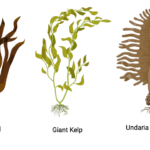Distribution of microorganisms in aquatic environment
Distribution of microorganisms in aquatic environment
Please login to submit an answer.
the distribution of microorganisms in aquatic environments—it’s not random, depends on light, oxygen, nutrients, temperature, salinity. in surface water, especially photic zones, there’s high density of phytoplankton like cyanobacteria and algae, ’cause sunlight supports photosynthesis. zooplankton, protozoa, and small flagellates feed on them. bacteria thrive here too, recycling organic matter.
as depth increases, light fades—so in middle and deep layers, chemoautotrophs and heterotrophic bacteria dominate. Archaea, especially extremophiles, live in deep-sea vents where high temperature, pressure, and sulfur compounds exist. sediments at the bottom contain anaerobic bacteria, like methanogens, sulfate reducers—because oxygen’s absent.
freshwater vs marine—microbial composition differs. marine water supports salt-tolerant species, lots of vibrio, diatoms, dinoflagellates. freshwater bodies have diverse cyanobacteria, actinomycetes, rotifers, and green algae. estuaries are nutrient-rich and support mixed populations due to tidal mixing. seasonal changes, pollution, and nutrient loads shift community structure constantly. microbial distribution reflects the ecosystem’s balance, productivity, and stress levels.
- Share on Facebook
- Share on Twitter
- Share on LinkedIn
Helpful: 0%




